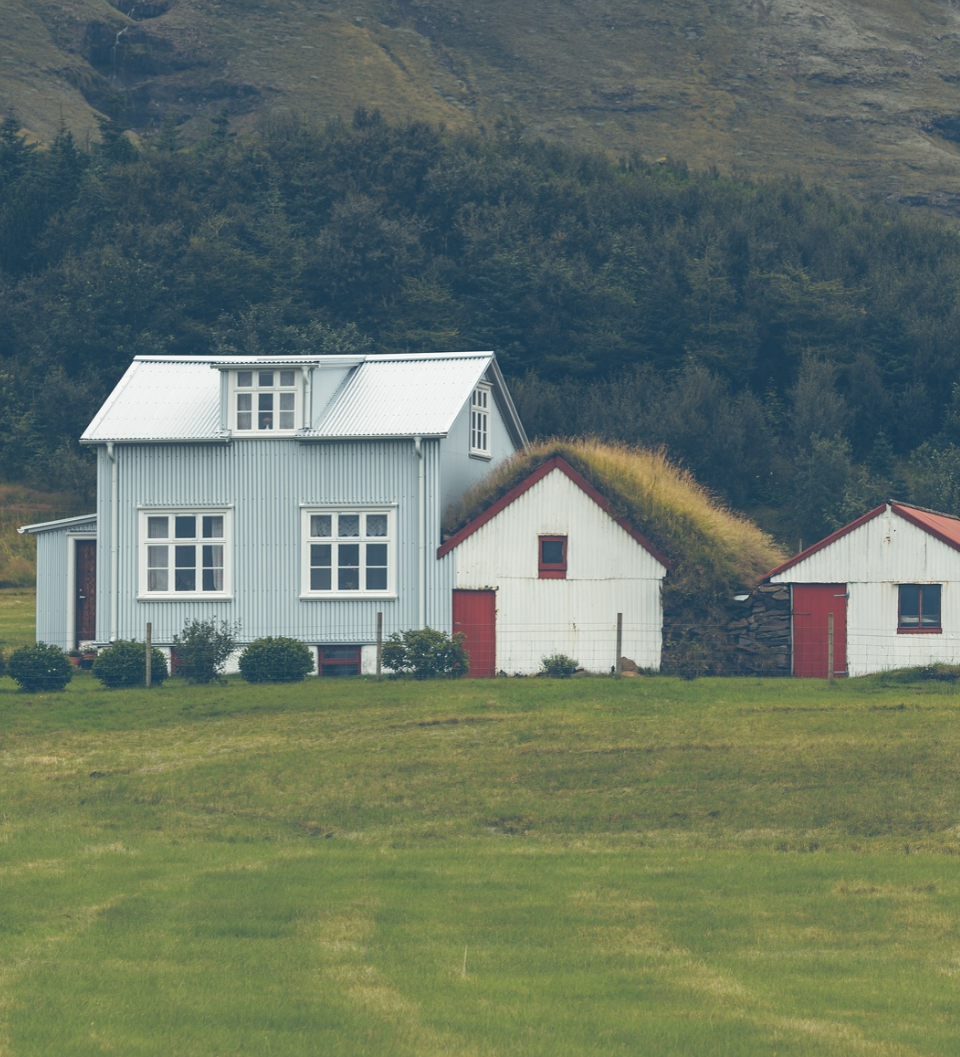Questions? Let's Talk: 877.762.4375
Questions? Let's Talk: 877.762.4375
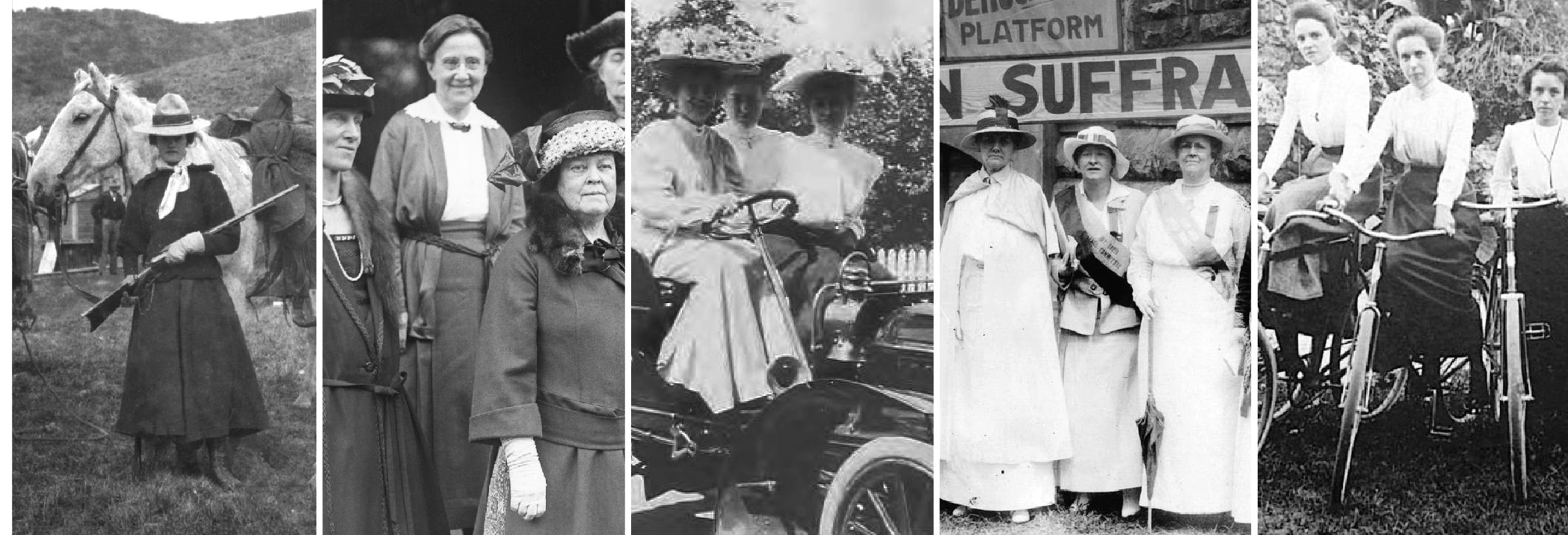
Boulder, from the distant past to present day, has always been teeming with powerful women. These remarkable women still have deep ties to the city today. Draw inspiration from their amazing feats – walk in their shoes as you explore their legacies in Boulder.
– Researched & written by Mike Hamers
Mrs. Maxwell was a Colorado naturalist, artist, hunter, and the mother of modern taxidermy. She was the first woman field naturalist to obtain and prepare her own specimens and she set a new precedent for showing the animals in lifelike poses surrounded by a natural setting. Her 1876 display at the Centennial Exhibition in Philadelphia of lifelike animals she shot and stuffed, won her national acclaim.
At an early age, Martha showed unusual spirit for a female in her home state of Wisconsin. Her sister, threatened by a rattlesnake, drove Martha to pick up her first gun and with one shot, killed the rattler. Her move to Boulder transpired when she married James Maxwell in 1860. His lumber business flourished in the new territory. New to Colorado, Martha couldn’t get over the beauty and abundance of wildlife. She accompanied her husband on hunting trips taking in the scenery and habitat of the wild animals. She was an excellent shot and would often go off on her own and camp out alone in the wilderness for days, studying the wildlife.
Taxidermy fascinated her and she quickly learned the trade. Her trips with her husband allowed her to build set pieces of stuffed animals and birds in their natural state. She displayed these pieces in her home until she found a building in Boulder in 1873 to house her treasures – known as the “Rocky Mountain Museum.” Due to low attendance, the museum was moved to Denver – but the museum remained unprofitable and closed.
But all was not lost – from there, her hundreds of preservations displaying her own developed taxidermy techniques in their natural habitats carried on in a display at the Centennial International Exhibition of 1876, the first World’s Fair in the U.S. Few people in the East had ever traveled West, so they were absolutely amazed by Martha Maxwell’s work. Martha received national recognition for her natural habitat displays and her taxidermic artistry. Her presentation showed bears, deer, black-footed ferrets, and other mammals cavorting across a Rocky Mountain landscape, and people were fascinated by it — and her. It was reported that police were on hand when she was in the building, to maintain crowd control around her.
Later on, she soon found it practical to hire a blacksmith to craft a light frame; she specified the exact dimension for each specimen, and then after the blacksmith made the frame, she covered it with cloth before sewing the animal skins over it. This was a more advanced approach than what was done by taxidermists in the East. However, Martha Maxwell was isolated by geography and gender, so it took time for others to realize the advances she was making.
In 1877, Martha was recognized as the person who discovered the Rocky Mountain Screech Owl, which is named Scops Maxwelae in her honor.
• Maxwell’s “bloomer suit” (an outfit she preferred for her outdoor lifestyle) is part of the archives at the Museum of Boulder and is occasionally part of their exhibitions. Stop by the museum to learn more about Boulder during Maxwell’s era.
• Note: Maxwell Street in Boulder is actually named after Martha’s father-in-law, James P. Maxwell, who owned about 1500 acres of land in the north Bouldet area.

A civic leader, business and pioneer woman, Hannah Barker was an early philanthropist during a time when women’s opinions weren’t often recognized. Barker was one of Boulder‘s first school teachers, on the board of directors at the Boulder Bank and there isn’t much in Boulder‘s early development that Barker didn’t play a role in. She helped establish Columbia Cemetery, was a supporter of the Colorado Chautauqua and was involved with Boulder‘s first reading rooms, which eventually became the town’s public library.
Born in 1844 as Hannah Connell, Barker and her family emigrated from Ireland to Massachusetts in 1852. After spending time in Massachusetts and Iowa, she crossed the Great Plains with two other early immigrants to Boulder County: her lifelong friend, Mary Davidson, and Davidson’s husband, William (after whom Davidson Mesa in Boulder was named), and at some point along the way obtained a college education. In 1867 Barker settled in Ward, Colorado, not far from the City of Boulder. There she taught school in a saloon, providing a civilizing influence on the children of local miners whose parents did not always have a favorable view of book learning. In 1869, Barker moved to Boulder where she taught in the newly created Boulder Valley School District.
In 1877, she married Ezra Barker, a local businessman with extensive real estate holdings, and gave up teaching. Hannah and Ezra had no children together though Ezra had a daughter, Josephine, from a previous marriage. Just six years after their marriage, Ezra died in 1883, leaving most of his property to Hannah Barker. That property included a ranch in Boulder Canyon near the town of Nederland. The Central Colorado Power Company wanted to buy the ranch to build a hydroelectric dam to supply electricity to mining camps and the City of Denver. Barker refused to sell the land but was eventually forced to do so through a process similar to the contemporary legal procedure of Eminent domain. The dam was constructed by hauling concrete and other materials along a specially constructed spur of the Switzerland Trail narrow-gauge railroad. Barker Reservoir, which was completed in 1910, was named for Hannah Barker. The city of Boulder now owns and manages Barker Reservoir, which they purchased in 2010.
In 1911, Barker donated land to the City of Boulder at the corner of 15th and Spruce Streets for use as Barker Park. Today, children are often found climbing trees and observing the plants growing in the beds used by Boulder Day Nursery.
Barker lived a great part of her life in a stately home on a large lot in the Highland Lawn subdivision she developed. Ezra Barker purchased the house, located at 800 Arapahoe Avenue and built in 1875, months before he met Hannah Barker in 1877. It is one of the oldest homes in Boulder. In 2010, the Hannah Barker House was donated to Historic Boulder.Boulder‘s City Council unanimously designated the Hannah Barker House as an individual landmark in 2009.
• Admire Barker’s home at 800 Arapahoe Avenue, which Historic Boulder recently helped lovingly restore.
• The Barker Park is located at 1518 Spruce Street.
• Enjoy the Barker Recreation Area is located in an aspen-spruce forest above 9,000 feet in elevation and is adjacent to the Upper Barker Reservoir in Nederland. It has two small fishing lakes that permit non-motorized boats and seven other backcountry fishing lakes that can be accessed by the many hiking trails in the area, among them the Great Western Trail.
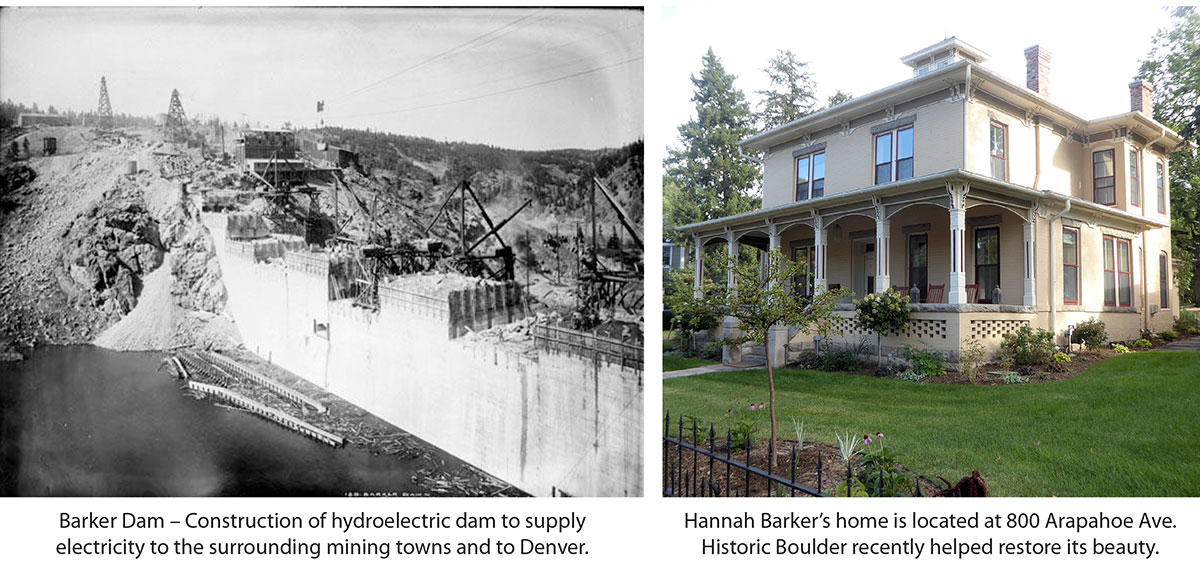
Theodosia Ammons was an American suffragist and a historic trailblazer. She was the first female dean at what is now Colorado State University, president of the Colorado Equal Suffrage Association, founding principal of Chautauqua’s School of Domestic Science and director of the Colorado Chautauqua’s original continuing education school for teachers. This spring of 2023, Ammons was inducted into the Colorado Women’s Hall of Fame.
With the help of fellow suffragist Eliza Routt, she developed a related interest in women’s education and began the promotion of domestic science in Colorado schools. In 1895 they co-founded the department of Domestic Economy at Colorado Agricultural College in Fort Collins – the first co-ed universities in the state. Ammons became the university’s first female faculty member, providing young women with a well-rounded education that included practical skills and liberal arts courses plus academic courses such as architecture and chemistry as well as applied arts courses such as cooking, sewing, and decorating. Ammons helped many new graduates find jobs as nurses or teachers.
In 1902 Ammons became dean of woman’s work at Colorado Agricultural College, making her the first female dean in the school’s history. One of her first actions as dean was to change the name from the Dept. of Domestic Economy to the Department of Domestic Science. Ammons’s focus turned to the scientific methods for cooking, hygiene, and architecture in homes. The name change came as another attempt to make the college more supportive of women’s education.
Meanwhile, Ammons continued her work on behalf of women’s suffrage. In 1902 she was elected president of the Colorado Equal Suffrage Association and was also nominated to represent Colorado at the 1902 National Convention of Delegates of Woman Suffrage in Washington, DC. At the convention, she spoke about the importance of equal suffrage and its outcomes in Colorado. In her speech, Ammons argued that women voting would improve American politics by making it more equitable. She finished by mentioning the positive results of the recently held Suffrage Day at the Colorado Chautauqua in Boulder.
• Wander along the peaceful cottages of Chautauqua, where, in 1900, Ammons designed a secondary home, Gwenthean Cottage, on the grounds. Enjoy the Flatiron views and stop into the Ranger Cottage for an ice cream cone or a cup of coffee.
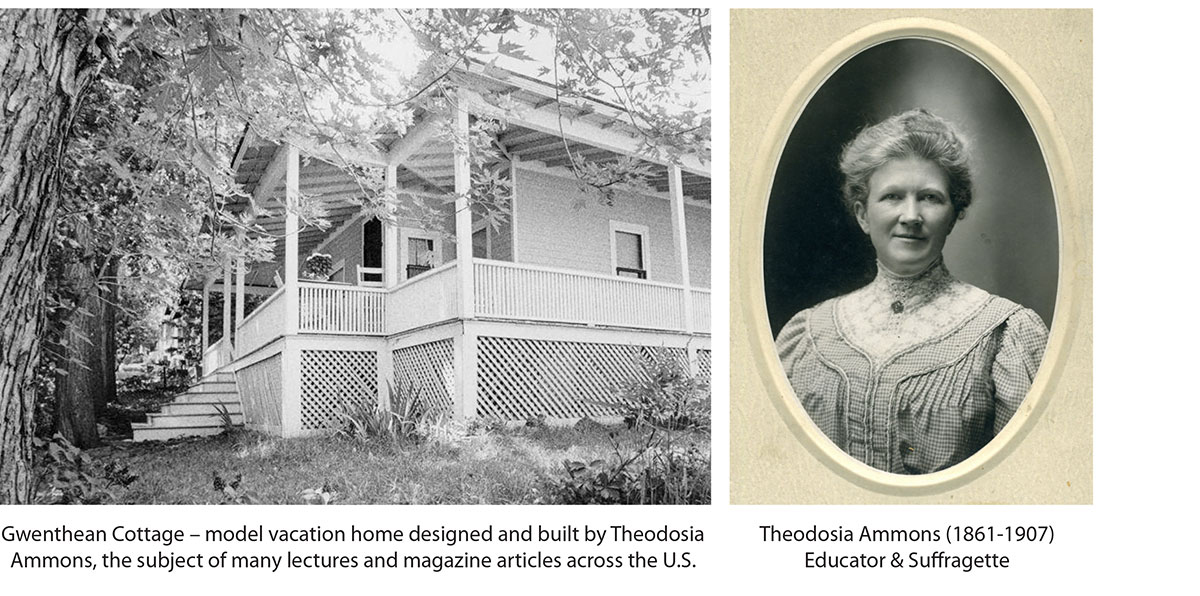
In 1904, women’s rights activist Jean Sherwood came to Boulder to lecture at the Colorado Chautauqua, which was part of a broader Chautauqua movement of family retreats across the country, often offering lectures, concerts, arts, and outdoor activities. Invigorated by the beautiful setting, she returned (at age 65) to establish the Bluebird Cottage to serve as a vacation haven for single working women from Chicago. Another Bluebird Lodge was later established in Gold Hill near Boulder.
Sherwood was also active in the Colorado Chautauqua Association and organized the Boulder Art Association/BAA (which still exists today and of which I am a current active member) and Artists Guild in 1923. The BAA revitalized the other practices and traditions of the original BAA – community outreach, county art shows, and a gathering place for artists and art lovers alike.
• Take a stroll by the Bluebird Cottage at 1215 Baseline Road, or attend a lecture series at the Colorado Chautauqua, with a huge variety of topics, ranging from Peruvian archaeology to the sport of slacklining.
• Also, take in a Boulder Art Association Members’ Art Show that has taken place in various Boulder venues twice each year (Spring and Fall Shows) since its founding in 1923. WEBSITE: https://boulderartassociation.
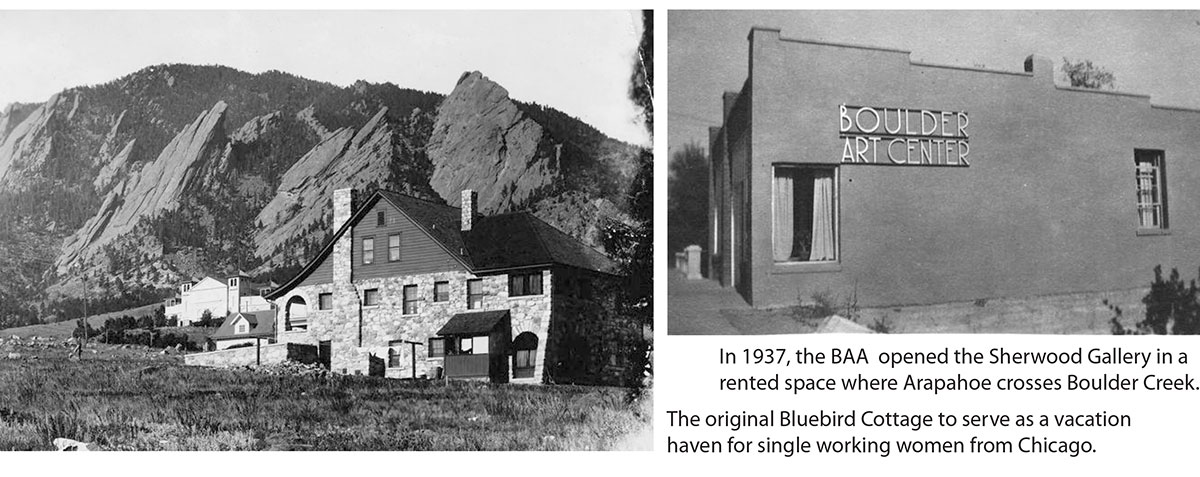
Clara Savory was a temperance librarian. As a prominent member of the local branch of the Women’s Christian Temperance Movement, Savory pioneered the idea of substituting reading for drinking, or “booze to books,” in Boulder. She helped provide a reading room at Spruce and Broadway, where folks could socialize, read and discuss ideas — sans alcohol. She opened Boulder’s first library in 1907, after petitioning and winning a grant from Andrew Carnegie, and served as its librarian for 19 years.
• Visit the Savoy Library, now known as Carnegie Library for Local History, which houses a wonderful collection of Boulder historical photos and documents – located at 1125 Pine St., Boulder, CO 80302
Web: https://www.
• Clara is buried in the Columbia Cemetery in Boulder, Sec. F7-5, Lot SW, Memorial ID 67672827.
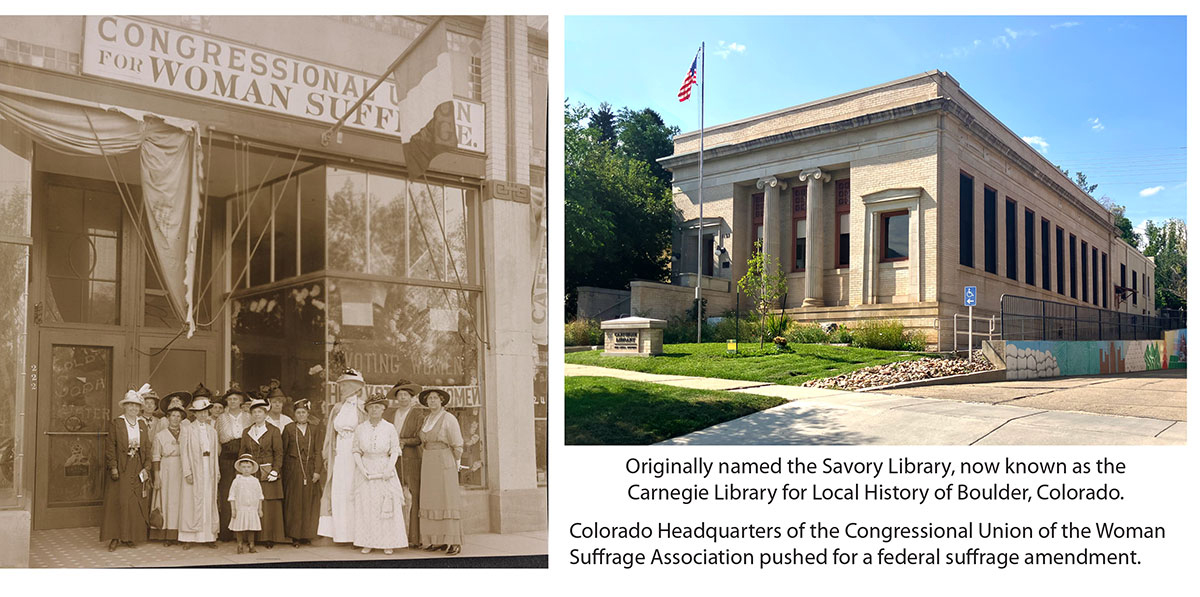
Mrs. Florence Molloy and Mrs. Mabel MacLeay, two widows from Syracuse, NY, came to Boulder after World War I and opened a taxi business (and scenic trips) out of the Hotel Boulderado.
In 1918, during the influenza epidemic, they volunteered as Red Cross aids to help transport nurses and medical supplies to the mountain communities. At the height of the epidemic, a Boulder undertaker was called to pick up the body of a flu victim at an isolated cabin. When he found he could not get his hearse over the rutted and winding mountain roads, he asked Molloy to help. She decided if she could handle that, she could handle any kind of transportation job. She then invited MacLeay to join her, and they bought a second touring car.
In 1946, they purchased a tract of land at Gold Hill and constructed the Double M Ranch which they operated until selling it in 1945. The ranch is still operational today — The Colorado Mountain Ranch (or simply “The Ranch”) is a songbird sanctuary featuring an outdoor amphitheater, hiking and riding trails, a campfire ring, and dedicated venues for activities including gymnastics, mountainboarding, and disc golf. At the heart of the Ranch sits our rustic turn-of-the century log lodge which was originally built in 1925 by Mary Malloy and Molly McClay as the hub of their M&M Riding Ranch.
Phone: 303-442-4557 • Web: https://www.
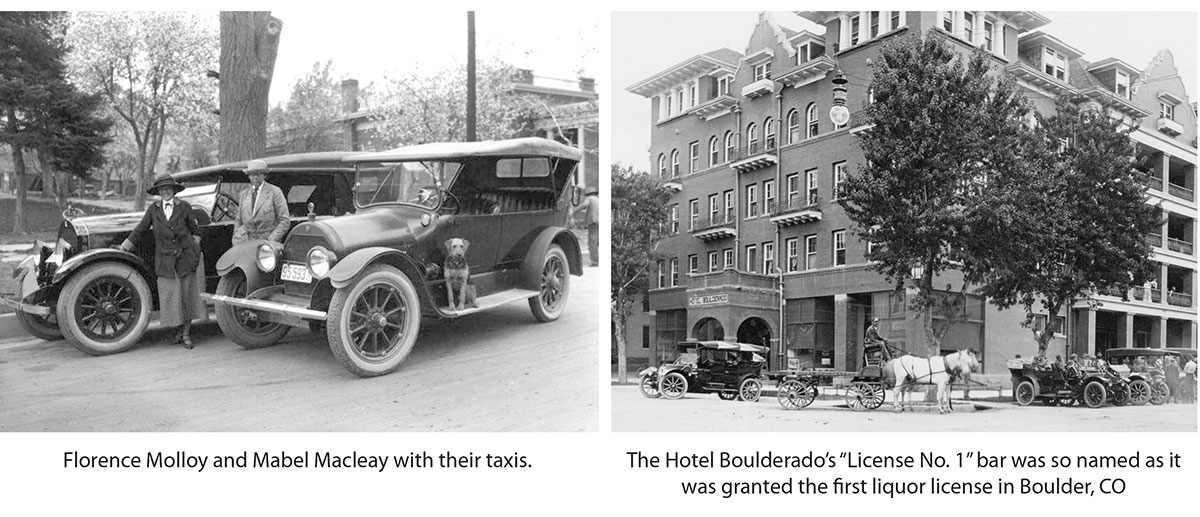
In 1878, Mary Rippon arrived on campus at the newly founded University of Colorado in Boulder to teach grammar, French, German and mathematics. She was the first woman to land a faculty position at the university and is speculated to be the first woman to teach men at any state university. She was eventually promoted to chair of the Department of Germanic Languages and Literature and effectively served as a dean of the women students, providing them with guidance, educational and sometimes even financial support.
When she was 37, she took a student 12 years her junior as her lover. They had a child together, a fact that, along with the relationship, was kept a secret from the community to protect Rippon’s career. Mary Rippon retired from teaching in 1909 and died in 1935, from myocarditis. In 1985, Rippon was inducted into the Colorado Women’s Hall of Fame.
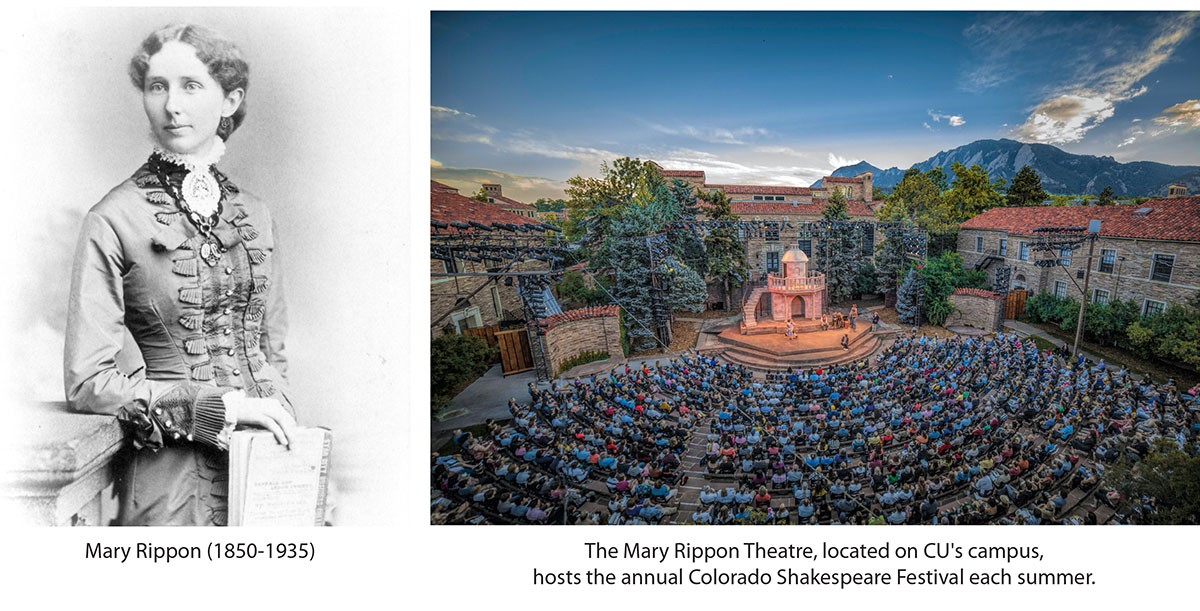
Muriel graduated from the New York School of Fine and Applied Arts (today’s Parsons School of Design) with a degree in costume design and advertising. She taught at the University of CO Boulder and served as department chair of the University’s of Fine Arts Department from 1929 to 1947. She became nationally renowned for her illustrations of mountain mining camps and ghost towns of Colorado and the West.
Muriel’s art style is considered Regionalism, also known as American Scene Painting, portraying local subjects with an entirely American approach (mid-1920s to mid-1940s). Famous examples are paintings by Thomas Hart Benton, Grant Wood and others, although Regionalism was not limited to the Midwest. Vintage regionalist paintings are stylized to the extent that they are not Realism or Impressionism, but they are still representational and not abstract.
After her passing, the University Board of Regents named the fine arts building in her honor. While that structure has since been replaced, her mark remains on CU’s art program.
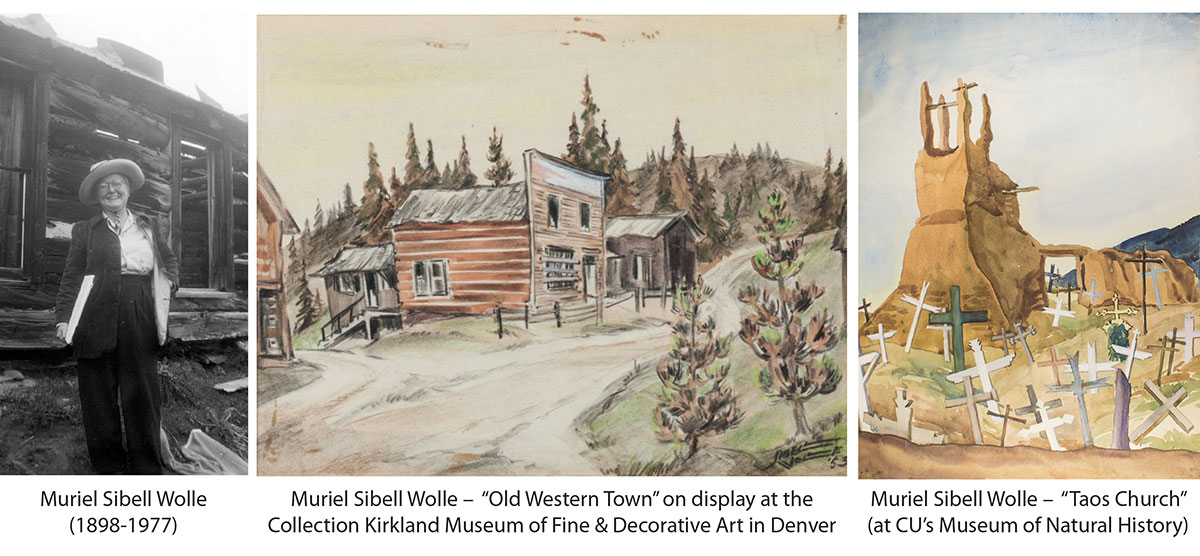
In the mid-1920s, artist Eve Drewelowe moved to Boulder, where she taught art classes and became a charter member of the Boulder Artists Guild. During her remarkable six-decade career span, with a fondness for Western landscapes, she produced more than a thousand works of art in various mediums: oil, watercolor, pen and ink, and other media in styles that included impressionism, social realism and abstraction.
Although Drewelowe is mainly renowned in Colorado and Iowa, she had solo exhibitions all over the country. Her work was shown at National Association of Women Artists exhibitions, the Art Institute of Chicago, the Denver Art Museum, the National Museum of Women in the Arts and numerous other esteemed institutions.
She was also an early feminist, insisting on keeping her maiden name and decrying the role of the housewife as “slave.” Drewelowe struggled with which surname to use for herself. She exhibited under the name Eve Drewelowe Van Ek until the early 1950s, when she resumed using her maiden name. And she did not want to be involved in the pleasantries of being the dean’s wife, especially hosting dinner parties, so she specified to have the house built lacking a dining room.
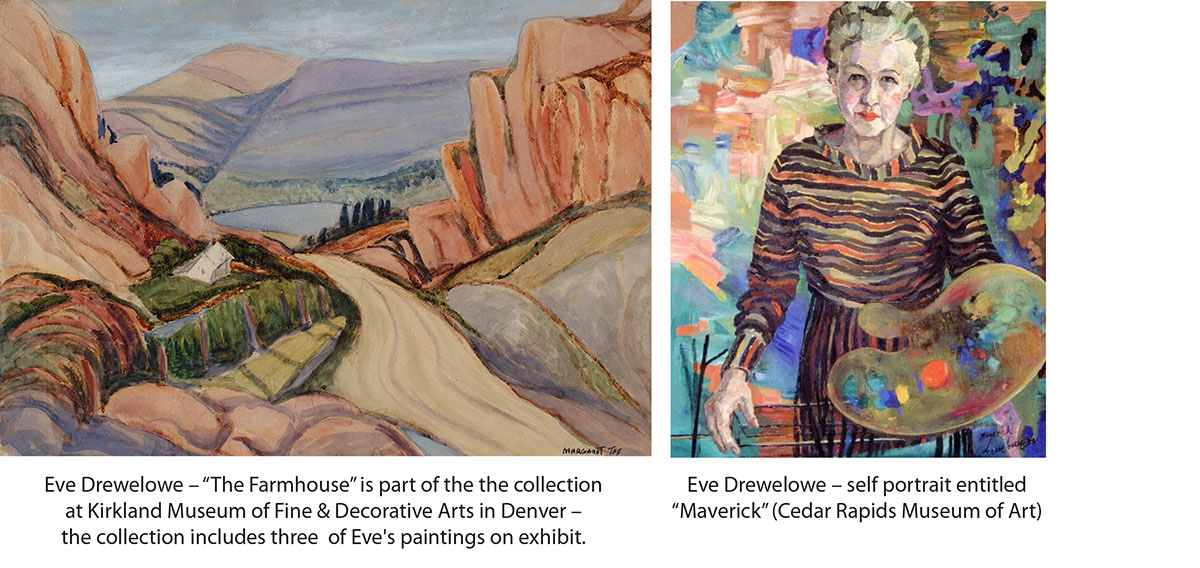
Using her legal education as a springboard to other interests, Ruth Wright has dedicated her career to being a public servant, environmentalist, and historian. She’s been called the “mother of Boulder’s greenbelt” and in the 60s helped win voter approval for a sales tax to purchase and preserve open space — making Boulder the first city in the nation to tax itself for the purpose of land preservation. She also wrote a legal paper that resulted in Boulder limiting the building height to 55 feet in Boulder to preserve views and historic buildings.
To win her battles about building height limitations and downtown and other revitalization projects, she decided that she needed a law degree. Married, with two young children, Ruth enrolled in the CU Law School and graduated in 1972. Her education served her well in dealing with Colorado State Legislature and state constitution issues. She became the chair of PLAN-Boulder, one of Boulder‘s first environmental groups.
Wright served in the Colorado House of Representatives from 1980-1994 and became the second woman ever to serve as House Minority Leader, a role that she held from 1986-1992. After her resignation, she held positions in many environmental organizations and advisory boards. She is in her 90s and still lives in Boulder today.
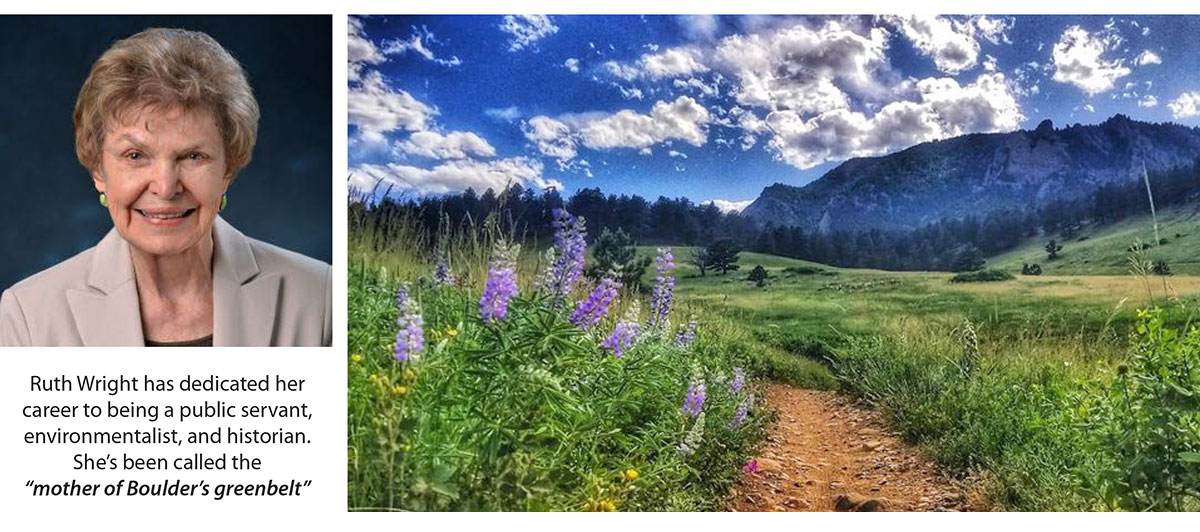
======
Do you have an interesting idea for an article for Jim Crowder’s Newsletter? The topic should be about some aspect of Colorado life: it’s history, people, places to visit, restaurants, parks, museums, etc. Jim loves “Top Ten” lists! Send on email to Jim at jim@crowder.com and let him know. We’ll even give you credit for suggesting the topic if we use it.
Will be happy to respond
